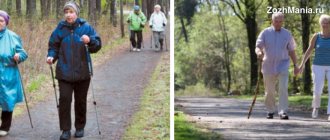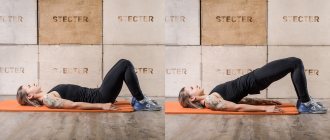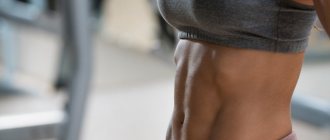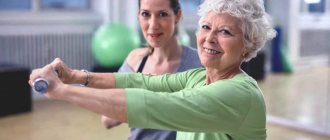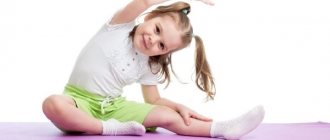Previously, morning exercises were an important part of the daily routine of a Soviet person. But over time, the development of fitness and strength sports, exercise has faded into the background or even out of life, since there is already enough load. And the pace of life of a modern person is such that there is no time left for gymnastics. But if you still decide to devote 10 minutes to exercise in the morning, then undoubted benefits are guaranteed throughout the day. Not to mention the fact that gymnastics has a positive effect on the quality of the working day.
How to do exercises in the morning correctly
In no case should exercise become a morning workout that serves as a replacement for evening exercise. Excessive load, on the contrary, takes away strength, overtires, and you should not expect a beneficial effect from charging. 10-15 minutes a day is enough to begin with, and for advanced users up to 20 minutes, provided that the complex is performed daily. A maximum of two days of rest is allowed. Perform movements smoothly, without fanaticism.
It is important to exercise on an empty stomach; you can drink a glass of water before the complex.
Complex of morning exercises for beginners
Start your morning with a deep breath: raise your arms through your sides and reach towards the ceiling, rising on your toes, exhale, return to your full foot and lower your arms, and so on 3 times.
Warm-up
The complex will take 10-12 minutes. As you get used to the program, the duration and number of repetitions can be increased.
Cervical region
Exercises 1
Stand straight, feet shoulder-width apart, palms on your waist, pull the top of your head up. Turn your head to the sides smoothly, without jerking. When turning, keep your chin parallel to the floor.
Exercises 2
Head tilts: look straight ahead, your chin should be at the same point. When bending, do not try to reach your ear to your shoulder or, conversely, raise your shoulders towards you. Gently stretch the sides of your neck.
Exercises 3
Roll your head in a semicircle without throwing it back. Tilt your head to the right and slowly roll your chin on your collarbone to your left shoulder, stop and return back.
Shoulder girdle joints
Exercises 4
Perform circular movements with your shoulders in one direction and the other.
Then add your arms to the stroke, rotating the joints through a full range of motion in both directions.
Exercises 5
Rotate your elbow joints, spreading your arms to the sides, one and the other.
Exercises 6
Hold your arms overhead and only rotate your hands in both directions.
Thoracic region
Exercises 7
Raise your arms above your head, clasping your hands together, without raising your shoulders to your head. Perform small bends to the sides alternately, without including the lumbar region. Stretch the side muscles of the body without large amplitudes.
Exercises 8
Stretch your arms to the sides and twist the thoracic region to the sides; when turning to the sides, do not rotate the lumbar region and pelvis.
Hip and lower back
Exercises 9
Rotate your pelvis in a circle, standing on straight legs, keep your hands on your waist. Perform rotations through full amplitude.
Exercises 10
Bend over, touching your palms to the floor. Do some soft springs at the bottom, standing with straight knees and rise up. Do this several times, but without sudden movements.
Knee and ankle joints
Exercises 11
Place your palms on the floor, touching your fingers to the floor, and squat, completely lowering your pelvis to your heels. When squatting, the heel comes off the floor and the toe rises. And straighten up, fully extending your knees, but do not lift your palms off the floor. And so several times, stretching the back of the body.
Exercises 12
Get up, stand straight and roll from toe to heel.
Main part
Side bends
This exercise is performed with full amplitude. Place your feet wider than your pelvis, raise your right arm above your head and bend to the left a maximum of 15-20 times, repeat on the other side. When performing the exercise, do not move your pelvis, work only with your torso.
Forward bends
Place your palms on your waist, feet shoulder-width apart. Bend forward with a straight back and straight knees. Lower your torso as low as possible until it is parallel to the floor, but do not round your lower back. To make the exercise more difficult, you can hold your arms above your head. Perform 15-20 bends on each side.
Squats
Place your feet slightly wider than your pelvis and point your toes slightly apart. Keep your hands in front of you. Squat until parallel to the floor, move your pelvis back, but do not lean your body onto your hips. It is important that your knees do not go into a sharp corner. Squat 20-30 times.
Mill
It is important to perform this type of twist with a straight back. Place your legs wide, tilt your body until it is parallel to the floor, spread your arms to the sides and begin twisting - turning your body, raising your arms up and down alternately. The arms do not move separately, but together with the body. Perform 20-30 crunches.
Swing foot to palm
Place your feet wide and raise your arms in front of you. Perform alternate swings of straight legs towards the opposite palm. When performing swings, do not round your back; perform the movement using the swing and flexibility of your legs, and do not lean towards your feet. Perform 15-20 swings on each leg.
Rifles
Place your feet as wide apart as possible. Bend your body forward and touch your palms to the floor. Bend your right knee and lower your pelvis as close to your heels as possible. Roll your pelvis towards your left leg, not lifting your pelvis up, but extending it as low as possible above the floor. Don't take your hands off the floor. After rolling to the other leg, smoothly repeat the movement back, and so on 10-20 times.
Hitch
The end of the exercise involves restoring your breathing, so walk slowly around the room, breathe evenly and deeply. At the end, stay in place, rise onto your toes and take a deep breath and exhale forcefully, raising your arms up to your sides.
Why do you need a warm-up before training?
Warming up before training is the most important part of a fitness routine. A good warm-up will gradually increase your heart rate, increase blood circulation to your muscles, tendons and ligaments, and prepare you mentally for the workout. Regardless of whether you are going to do strength training or cardio exercises, it is necessary to warm up before training.
Benefits of warming up before training:
- You warm up your muscles, ligaments and tendons, this improves their elasticity and reduces the risk of injuries and sprains.
- Warming up before training will help stretch the joints that receive a lot of stress during training. Your joints are at risk of injury if you don't do preparatory exercises.
- Warm muscles contract and relax better during exercise, which means your strength capabilities during exercise will be higher.
- Warm-up exercises optimize the activity of the cardiovascular system: this will help reduce the load on the heart during exercise.
- Warming up before exercise improves blood circulation, which will saturate your muscles with oxygen and nutrients. This will help increase your endurance during exercise.
- During a warm-up, your body increases the production of hormones responsible for energy production.
- Training is a kind of stress for the body, so a high-quality warm-up will prepare you for stress from a mental point of view, improve coordination and attention.
- During light warm-up exercises before training, adrenaline is released into the blood, making your body better able to cope with physical activity.
A good warm-up before training will help you not only avoid injuries and problems with the cardiovascular system, but also make your workout more effective. If you want to skip the warm-up and save time so you can focus more on increased loads for quick results, then this is the wrong way. After warming up, your body will work better, you will be more energetic and resilient, which will give you much better results in the long run.
A dynamic warm-up should be carried out before any workout, regardless of the type of load: strength training with weights, running, cardio training, cycling, kickboxing, dance training, split stretching, crossfit and any other sports direction. Warming up before training is necessary both when exercising in the gym and at home (outside).
Why don't people warm up before working out?
Many people don't warm up before exercise, considering it a waste of time. You've probably heard more than once from friends or acquaintances: “I regularly do strength and cardio training in the gym and never warm up or cool down. I didn’t feel any harm.” Never rely on someone else's dubious experience!
Firstly, each person has his own individual level of strength; no one knows the reserves of his body. It may not fail for a month, two, a year or even a couple of years, gradually wearing out, but how long this can last is unknown. Secondly, in conditions of excessive and very often contradictory information on fitness, many of us already make a lot of mistakes that can affect our health. Therefore, try to follow at least the canonical recommendations - doing a warm-up before each workout is one of them.
It's important to note that even personal trainers and group exercise trainers may not devote a minimum amount of time to warming up. But you yourself are responsible for your health, so don’t be lazy to come 10 minutes before training and do the warm-up yourself. Even if you haven’t had any injuries to date, remember that a cold tendon tear or other unpleasant injury can happen at any time.
The situation is similar with home workouts, of which a large number are now being produced. Typically, programs are designed for 20-30 minutes, which is very important for many people in busy conditions. And of course, in such short programs, at best, 2-3 minutes will be devoted to warm-up, and at worst, there will be no warm-up at all.
What are the dangers of not warming up?
Research shows that only 5% of people do a good warm-up before exercise, and this is a very sad statistic. Many exercisers believe that this is a waste of time, which is already limited in fitness classes. Let's remember once again why not warming up before training can be dangerous, in addition to reducing the effectiveness of the activity?
- The most common problem that occurs when you don't warm up before exercise is a sprained ligament. A very unpleasant and painful syndrome, due to which you will have to take a break from training.
- An even more unpleasant problem is joint injury. If you exercise on a cold joint, there is a high risk of damaging it. The danger of a joint injury lies not only in the duration of recovery, but also in the fact that after the injury it will constantly remind itself. Due to improper loads, the joints of the knees, ankles, shoulder and hip joints are especially often affected.
- Without a good warm-up, dizziness or even fainting may occur due to the high load on the heart.
- A sudden sharp load without a preparatory warm-up can cause a sharp jump in pressure, which is equally dangerous for people with hypertension and hypotension.
Pre-workout warm-up structure
It is advisable to warm up before training for at least 7-10 minutes. It is better to start warming up by walking in place to warm up the body. Then you should perform joint exercises and dynamic exercises to stretch the muscles. The warm-up ends with moderate-intensity cardio exercises. At the end of the warm-up, we restore our breathing by taking a deep breath and exhaling.
Warm-up structure before training for 7-10 minutes:
- Walking in place: 1 minute
- Joint gymnastics: 2-3 minutes
- Dynamic muscle stretching: 2-3 minutes
- Cardio warm-up: 2-3 minutes
- Recovery breathing: 0.5-1 minute
Joint exercises activate the work of joints, tendons and ligaments, improve their mobility and help work out the periarticular muscles. Dynamic stretching will make your muscles more elastic, which will help them perform at their best throughout your workout. Cardio warm-up will increase your body temperature, increase blood circulation, and prepare your muscles for further stretching.
Thanks to this warm-up, you will make your heart work faster, speed up blood circulation, and gently awaken all the muscles of the body. After a proper warm-up, a pleasant warmth spreads throughout your body, you feel invigorated and full of energy. If you plan to do stretching or splits as a workout, then the final cardio warm-up can be increased to 5-7 minutes.
Do not confuse warming up before training with stretching after training. In the warm-up, your goal is to warm up the muscles and joints, increase blood circulation, and prepare the body for stress. Warm-up should not be slow and static, you should warm up well. After training, on the contrary, you should restore your breathing, lower your heart rate and perform static stretching exercises.
Stretching for individual muscle groups:
- 10 Quadriceps Stretch Exercises
- 10 exercises to stretch your buttocks
- 10 exercises to relax your legs
- 16 Exercises to Stretch Your Arms and Shoulders
- 10 exercises to stretch your pectoral muscles
Complex of morning exercises for advanced people
Warm-up and cool-down remain the same; perform the movements dynamically, but without jerking. The complex will take 15-20 minutes, perform one set of each exercise. Over time, the number of repetitions can be increased, but the duration of the workout should not exceed half an hour, otherwise it will not be exercise, but a full-fledged workout.
Squats
Squats are performed according to the classic pattern: feet shoulder-width apart, arms in front of you, knee not extending forward beyond the toe. Perform 20-30 repetitions. To make the load more challenging, add springing movements to squats. Thus, perform 15-20 squats, do the remaining repetitions with three springs at the bottom point with an emphasis on working the gluteal muscles and rise up - this is one repetition, at least 5-10 times.
Lunges + swing
Place your feet together, keep your palms on your waist. Lunge your right leg back, placing it on your toes, without touching your knee to the floor, push off and swing the same right leg forward while lifting as much as your muscles allow. After swinging your leg, lunge back again with the same leg. And so you work on one side 20-30 times, then the same on the left leg.
Push ups
Perform the exercise with wide palms. Girls can do push-ups from their knees or on a height, for example, on a table. Do as many repetitions as possible until your muscles fail.
Plank in dynamics
Get into a plank position, tightening and tightening your abdominal and buttock muscles while maintaining a straight spine. The dynamic version of the plank involves more muscles, both deep and external. Take an extra step with your right foot to the side, and put your left foot towards it. Then take a left step to the side, place your right one. Work like this for about a minute. If you wish, you can lower yourself onto your elbows.
Second option: keep your feet in place, lift from your forearms on straight arms one at a time, and also lower yourself onto your elbows. Do this for about a minute.
boat
Lie on your stomach, stretch your arms in front of you, keep your feet hip-width apart. It is important to constantly tense your abdominal and buttock muscles. Exhale and lift your chest and hips off the floor without arching your lower back. Keep your head straight, the top of your head stretches in the direction of your palms. Lower yourself to the floor slowly. Repeat the lifts without bending your lower back 20-30 times.
Crunches
Lie on your back, straighten your legs in front of you, place your hands behind your head. As you exhale, slowly lift each section of the spine gradually without jerking. Fully straighten at the top, pulling the top of your head toward the ceiling, then slowly return your back to the floor in reverse order. If it's difficult, keep your hands in front of you.
Hand exercises
Plank . Starting position: emphasis lying on the floor, i.e. rest your straight arms and legs on the floor so that your body is parallel to the floor, your shoulders are directly above your palms, your back is slightly rounded, your legs are together. 2 sets of 20 seconds.
Plank on one arm (first on the right, then on the left). Starting position: lying down, press your straight arm to your thigh along the body, do not turn your shoulders, do not spread your legs. 2 sets of 20 seconds.
How to motivate yourself to do exercises
The main task is to decide on the purpose for which you need to do exercises. Perhaps there are problems with waking up and bringing yourself to your senses, fatigue during the day, weakness, or maybe poor posture, muscle weakness. Such seemingly trifles greatly affect the quality of a full life, they need to be eliminated. Therefore, just 10 minutes every day will simplify your life, make the start and continuation of the day easier and prevent the risk of various diseases, it is worth it to start doing simple exercises.
What results can you expect?
Of course, morning exercises will not replace full exercise and will not give you the body of your dreams in 10 minutes. Exercise will spur the body to take further action: it motivates, helps you find the strength to fight excess weight, and most importantly, ensures good health. A vigorous and healthy body is already a success. Therefore, after such exercises, the muscles will become toned, become more elastic, and the joints will be more mobile. And the rest is up to you.
And also read how to do Pilates → Breathing exercises for weight loss - oxysize.
What else can you do to help yourself during menopause?
Of course, gymnastics alone will not prevent age-related changes. With the help of gymnastics you can only improve your well-being. Serious symptoms of menopause are treated with medication, using hormone replacement therapy. This treatment is prescribed by a gynecologist-endocrinologist.
Hormonal treatment restores the balance of hormones to normal, rejuvenating the body. Correctly selected treatment is absolutely harmless and relieves severe symptoms of menopause. In addition, normal hormonal balance is the key to longevity, active sex life and good mood.


